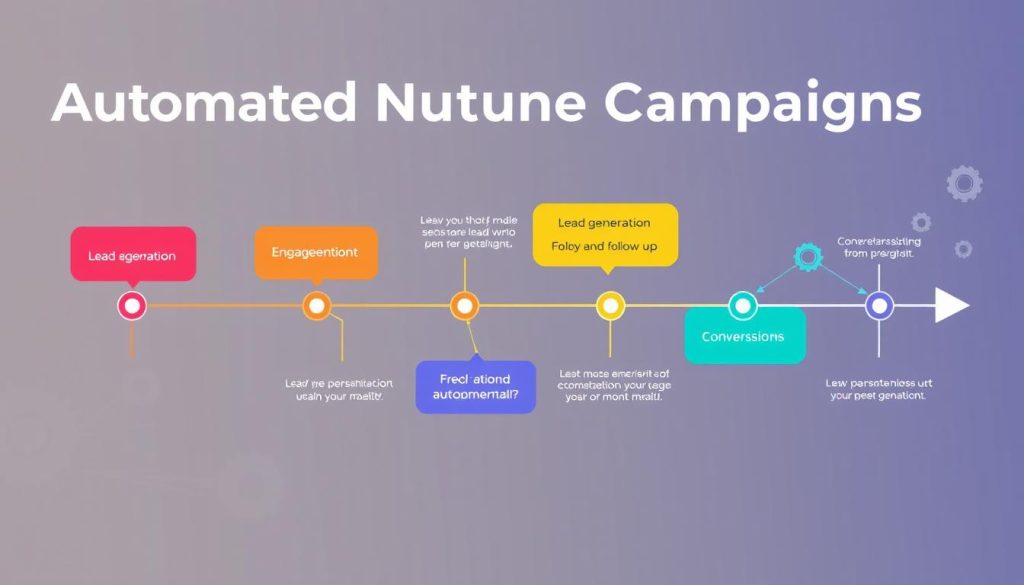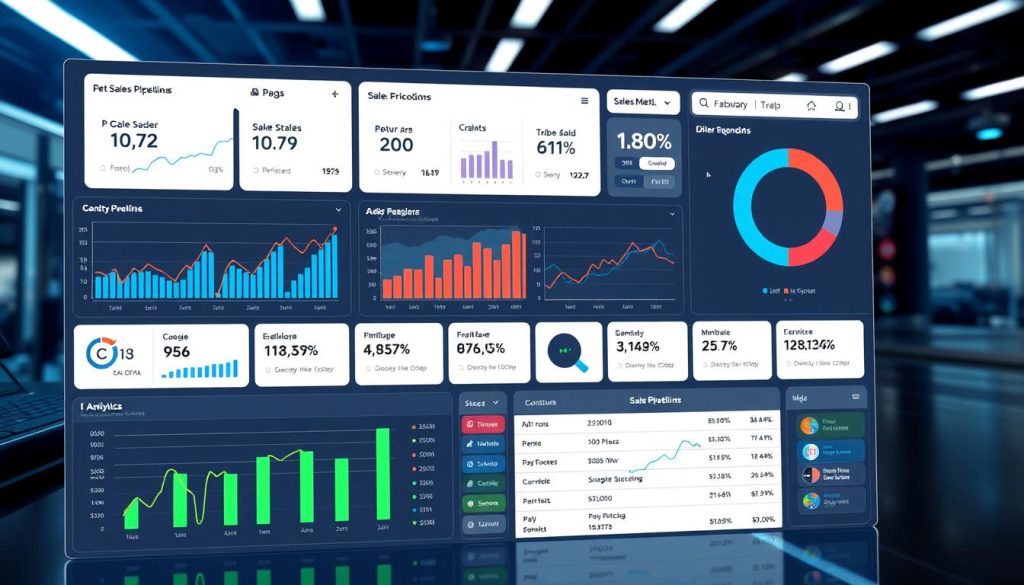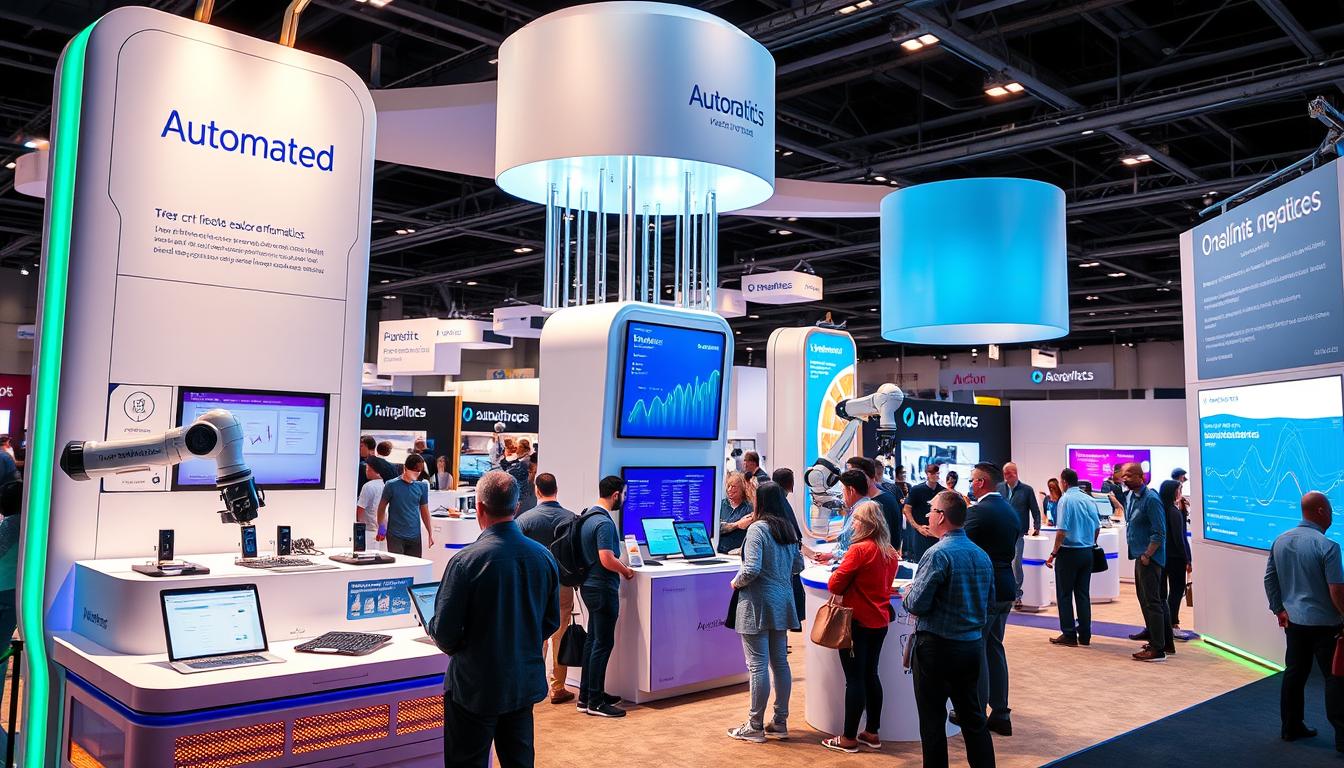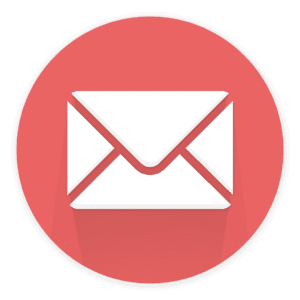Trade shows and expos are goldmines for leads, but the real challenge lies in effective follow-up. Mastering How to Automate Your Expo Lead Follow-Up with CRM can be a game-changer for your business. By leveraging CRM integration, you can streamline lead management and boost conversion rates.
Automation simplifies the process, ensuring no lead falls through the cracks. It allows for timely, personalized follow-ups that keep your brand fresh in prospects’ minds. With the right tools and strategies, you can turn those initial expo interactions into lasting business relationships.
Let’s dive into the world of automated expo follow-ups and discover how they can transform your trade show ROI. From choosing the right CRM to crafting compelling email templates, we’ll cover all you need to know to ace your post-expo strategy.
Key Takeaways
- CRM integration is crucial for effective lead management
- Automation saves time and boosts conversion rates
- Personalized follow-ups improve prospect engagement
- Timely communication is key to successful lead nurturing
- The right tools can significantly enhance your expo ROI
- Data-driven strategies lead to better follow-up results
Understanding the Importance of Automated Expo Follow-up
Automated expo follow-up revolutionizes how businesses handle leads after trade shows. This approach streamlines the process, making it more efficient and effective. Let’s explore why it’s crucial for modern businesses.
The Impact on Lead Conversion Rates
Automated follow-up significantly boosts lead conversion rates. By using marketing automation tools, businesses can quickly reach out to potential clients, keeping the momentum from the expo alive. This timely response often translates to higher conversion rates.
Time and Resource Management Benefits
Event lead capture systems save precious time and resources. Instead of manually sorting through business cards, teams can focus on high-value tasks. Automation handles the initial contact, freeing up staff to nurture promising leads.
ROI Optimization Through Automation
Automating trade show follow-up leads to better ROI. It ensures no lead falls through the cracks and allows for personalized communication at scale. This approach maximizes the return on your expo investment.
| Aspect | Manual Follow-up | Automated Follow-up |
|---|---|---|
| Response Time | Days to Weeks | Minutes to Hours |
| Lead Coverage | 60-70% | 95-100% |
| Personalization | Limited | Highly Customized |
| Resource Efficiency | Low | High |
By leveraging automation in expo follow-ups, businesses can dramatically improve their lead management process. This approach not only saves time but also ensures a more effective and personalized outreach strategy.
Essential Tools for Trade Show Lead Capture
Trade shows offer a golden opportunity for businesses to gather valuable leads. To make the most of these events, companies need the right tools for efficient event lead capture. Let’s explore some essential devices and software that can streamline your lead collection process and boost your sales pipeline.
Mobile apps have revolutionized lead capture at expos. These apps allow sales reps to scan badges, input notes, and sync data instantly with your CRM system. This seamless CRM integration ensures that no lead falls through the cracks and your sales team can follow up promptly.
For a more traditional approach, dedicated lead capture devices remain popular. These handheld scanners quickly collect attendee information and often come with customizable survey options to gather additional data relevant to your sales pipeline.
“The right lead capture tool can make the difference between a good trade show and a great one. It’s all about efficiency and follow-through.”
To help you choose the best tool for your needs, here’s a comparison of popular lead capture options:
| Tool Type | Pros | Cons | CRM Integration |
|---|---|---|---|
| Mobile Apps | Versatile, easy updates | Requires smartphone | Excellent |
| Dedicated Scanners | Reliable, purpose-built | Limited functionality | Good |
| Tablet-Based Systems | User-friendly interface | Battery life concerns | Very Good |
| NFC Technology | Quick data transfer | Limited adoption | Moderate |
By selecting the right tools for event lead capture and ensuring smooth CRM integration, you’ll set your team up for success in nurturing leads and maximizing your trade show ROI.
How to Automate Your Expo Lead Follow-Up with CRM Systems
Automating expo lead follow-up with CRM systems can revolutionize your marketing efforts. By leveraging the right tools, you’ll streamline your process and boost conversion rates. Let’s explore how to implement this powerful strategy.
Selecting the Right CRM Platform
Choosing the ideal CRM platform is crucial for effective contact management. Look for solutions that offer robust features and seamless CRM integration. Consider factors like user-friendliness, scalability, and compatibility with your existing tools.
Integration with Lead Capture Devices
Connecting your CRM with lead capture devices ensures smooth data flow. This integration allows for real-time lead collection at expos, minimizing manual data entry and errors. Look for CRMs that support popular lead capture tools used at trade shows.
Setting Up Automated Workflows
Marketing automation is key to efficient lead follow-up. Create workflows that trigger personalized email sequences based on lead interactions. This approach ensures timely and relevant communication with your expo leads, increasing engagement and conversion chances.
“Automation is not about replacing human interaction, but enhancing it with timely, personalized touchpoints.”
By implementing these strategies, you’ll transform your expo lead follow-up process. Automating your sales process with a robust CRM system will save time, improve accuracy, and ultimately drive better results from your expo investments.
Creating Effective Follow-up Email Templates
Crafting compelling follow-up emails is crucial for successful lead nurturing and boosting your sales pipeline. By leveraging marketing automation, you can streamline this process and maximize your results.
Personalization Strategies
Personalizing your follow-up emails goes beyond using the recipient’s name. Tailor your content based on their interests, previous interactions, and specific needs. This approach can significantly improve engagement rates and move leads further down the sales pipeline.
Timing and Frequency Best Practices
Timing is critical when sending follow-up emails. Aim to reach out within 24-48 hours after initial contact. As for frequency, maintain a balance between staying top-of-mind and avoiding inbox fatigue. A general rule is to space out your emails over a few weeks, gradually decreasing frequency.
Content Optimization Tips
To optimize your email content:
- Keep subject lines concise and intriguing
- Use clear, action-oriented language
- Include relevant calls-to-action
- Provide value in each communication
| Element | Best Practice | Impact |
|---|---|---|
| Subject Line | Keep it under 50 characters | Improved open rates |
| Personalization | Use dynamic content | Higher engagement |
| CTA | Make it clear and prominent | Increased click-through rates |
By implementing these strategies, you can create effective follow-up email templates that drive results and enhance your lead nurturing efforts through marketing automation.
Lead Scoring and Prioritization Methods
Effective lead scoring is crucial for managing your sales pipeline after an expo. It helps you focus on high-potential leads, saving time and resources. By prioritizing contacts, you can streamline your follow-up process and boost conversion rates.
A robust lead scoring system considers various factors:
- Engagement level at the expo
- Company size and industry
- Budget and decision-making authority
- Expressed interest in specific products
- Previous interactions with your brand
Implementing these criteria in your contact management system allows for efficient lead prioritization. This approach ensures that your sales team focuses on the most promising prospects first.
| Lead Scoring Criteria | Point Value |
|---|---|
| Requested product demo | 20 |
| Attended presentation | 15 |
| Provided contact information | 10 |
| Visited booth | 5 |
By assigning point values to different actions, you create a clear hierarchy of leads. This scoring system integrates seamlessly with your CRM, allowing for automated prioritization within your sales pipeline. Remember, regularly reviewing and adjusting your lead scoring model ensures its continued effectiveness in driving conversions.
Building Automated Nurture Campaigns
Crafting effective nurture campaigns is key to turning expo leads into loyal customers. By leveraging marketing automation and CRM integration, you can create personalized journeys that guide prospects through your sales funnel.
Segmentation Strategies
Divide your leads based on their interests, behavior, and expo interactions. This allows for targeted content delivery, boosting engagement rates. Consider segments like:
- Product interest
- Company size
- Buying stage
- Industry vertical
Content Mapping
Match your content to each segment’s needs and pain points. This approach ensures relevance and value at every touchpoint. A well-planned content map might include:
| Segment | Early Stage | Mid Stage | Late Stage |
|---|---|---|---|
| Small Business | Cost-saving tips | Product comparisons | Case studies |
| Enterprise | Industry trends | White papers | ROI calculators |
| Healthcare | Regulatory updates | Tech demonstrations | Custom solutions |
Timeline Planning
Set up a strategic timeline for your nurture campaign. This ensures consistent engagement without overwhelming leads. A typical timeline might span 4-6 weeks, with touchpoints every 3-5 days.

By implementing these strategies, you’ll create powerful lead nurturing campaigns that keep your expo leads engaged long after the event ends. Marketing automation tools can help streamline this process, making it easier to manage and optimize your campaigns for better results.
Integration of Marketing Automation Platforms
Marketing automation platforms are game-changers for expo lead follow-up. These tools supercharge your CRM integration, making lead management a breeze. By connecting your CRM with a marketing automation system, you’ll unlock powerful features that streamline your follow-up process.
Top platforms like HubSpot, Marketo, and Pardot offer seamless CRM integration. They allow you to create targeted campaigns, track lead behavior, and automate personalized follow-ups. This integration ensures no lead falls through the cracks after your expo.
Let’s look at the benefits of integrating marketing automation with your CRM:
- Automated lead scoring and qualification
- Personalized email sequences based on lead behavior
- Real-time analytics and reporting
- Improved lead nurturing and conversion rates
To get started, choose a platform that aligns with your business needs and budget. Then, work with your IT team or a third-party expert to set up the integration. Once in place, you’ll see a significant boost in your expo ROI.
| Feature | Benefit |
|---|---|
| Lead Scoring | Prioritize high-value leads for faster follow-up |
| Email Automation | Send timely, relevant messages to nurture leads |
| Behavior Tracking | Understand lead interests for targeted follow-up |
| Analytics | Measure campaign performance and ROI |
Remember, successful integration requires ongoing optimization. Regularly review your automation workflows and adjust as needed to maximize your lead conversion rates.
Analytics and Performance Tracking
Tracking the success of your expo lead follow-ups is crucial for lead management and ROI optimization. By analyzing key metrics, you can fine-tune your strategies and boost your sales pipeline.
Key Metrics to Monitor
To gauge the effectiveness of your expo follow-ups, focus on these vital metrics:
- Conversion rate
- Lead response time
- Engagement rate
- Lead quality score
These indicators help you assess the performance of your lead management strategies and identify areas for improvement.
Reporting Tools and Dashboards
Utilize powerful reporting tools to visualize your data and gain actionable insights. CRM dashboards offer real-time updates on your sales pipeline, enabling quick decision-making.

ROI Measurement Techniques
Calculate the return on investment for your expo participation and follow-up campaigns using these methods:
| Technique | Description | Benefit |
|---|---|---|
| Cost per Lead | Total expo costs divided by number of leads | Evaluates lead acquisition efficiency |
| Revenue Attribution | Tracks revenue generated from expo leads | Measures direct financial impact |
| Lifetime Value Analysis | Estimates long-term value of expo-sourced customers | Assesses long-term ROI |
By implementing these analytics and tracking methods, you can optimize your expo follow-up process, enhance lead management, and drive substantial growth in your sales pipeline.
Best Practices for Lead Management Workflows
Effective lead management workflows are crucial for optimizing your sales pipeline and maximizing conversions. By implementing smart strategies and leveraging CRM integration, you can streamline your processes and boost your team’s productivity.
Start by clearly defining your lead stages and criteria for progression. This ensures consistency across your team and helps identify bottlenecks in your sales pipeline. Create a standardized process for lead qualification, allowing your sales reps to focus on high-potential prospects.
Automation is key to efficient lead management. Set up triggers in your CRM system to automatically assign leads, send follow-up emails, and schedule tasks. This reduces manual work and ensures timely engagement with potential customers.
- Implement lead scoring to prioritize prospects
- Use data-driven insights to refine your approach
- Regularly clean and update your CRM database
Collaboration is essential for successful lead management. Encourage information sharing among team members and departments. This holistic approach ensures that all touchpoints with a lead are coordinated and aligned with your overall sales strategy.
“A well-designed lead management workflow can increase conversion rates by up to 300%.”
By following these best practices and continuously refining your lead management processes, you’ll create a more efficient and effective sales pipeline that drives growth for your business.
Troubleshooting Common Automation Challenges
Automating expo lead follow-up can streamline your lead management process, but it’s not without its hurdles. Let’s explore some common challenges and their solutions to help you make the most of your CRM integration and marketing automation efforts.
Technical Integration Issues
When setting up your automated system, you might face compatibility problems between your lead capture devices and CRM platform. To overcome this, ensure your chosen tools have robust API support. If issues persist, consider using middleware solutions to bridge the gap. Regular software updates are crucial for maintaining smooth CRM integration and preventing technical glitches.
Data Synchronization Problems
Keeping your lead data consistent across platforms can be tricky. To tackle this, set up real-time data syncing between your lead capture tools and CRM. Implement data validation rules to catch errors early. It’s wise to perform regular audits of your data to spot and fix any discrepancies, ensuring your lead management stays on track.
Workflow Optimization Solutions
Your automated workflows might not always perform as expected. To optimize them, start by mapping out your ideal lead journey. Use A/B testing to refine your follow-up sequences and adjust based on results. Don’t forget to gather feedback from your sales team to identify bottlenecks in the process. By fine-tuning your workflows, you’ll boost the effectiveness of your marketing automation and lead conversion rates.






